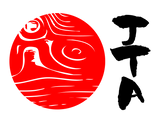
We are often asked about using whetstones, wetstones and water stones for sharpening tools and knives, so we thought we’d take a moment to clear up the confusion. Water stones are whetsones, and also wet stones. Some would call them wet whetstones. The word whetstone is derived from the verb, “to whet”, according to the oxford dictionary;
whet
VERB — whetted, whets, whetting
Sharpen the blade of (a tool or weapon)
‘she took out her dagger and began to whet its blade in even, rhythmic strokes’
Excite or stimulate (someone’s desire, interest, or appetite)
‘here’s an extract to whet your appetite’
Any stone that is used to sharpen an edge becomes a whetstone, whether it be natural, artificial, lubricated by oil or water, or used dry or wet. A wetstone is not really a stone, just a misspelled whetstone, and a wet stone can be a Japanese waterstone, or a pebble skimming across a lake.
Japanese Tools Australia sells a number of whetstones, most of them to be used with water, never oil (our only exceptions here are the versatile Dual Stones). Our Cerax waterstones are perfect for whetting the cutting edge of a kitchen knife or woodworking tools, but probably not great for whetting your appetite.
The important factor to consider when purchasing a waterstone is balancing how long the stone will maintain its flatness with the speed at which it cuts by revealing new abrasive, as well as the obvious consideration of cost. Click here for more information on sharpening stones.

